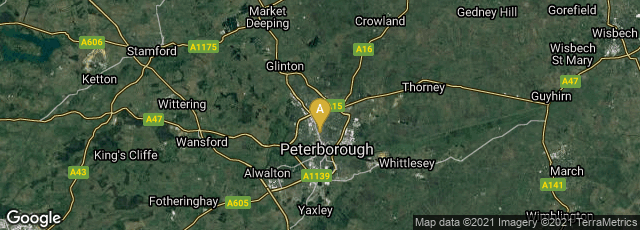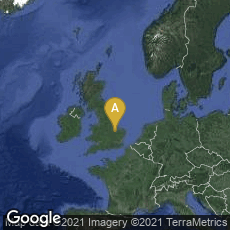

A: Peterborough, England, United Kingdom
On April 12, 2014 The New York Times published an article by Georgi Kantchev entitled "Leaner and More Efficient, British Printers Push Forward in Digital Age." From this I quote sections:
"PETERBOROUGH, ENGLAND —At a media conference a few years ago, the editor of The Guardian newspaper, contemplating the future of print, recalled his paper’s installation of its newest presses in 2005.
“ 'I had a feeling in my bones that they might be the last,' said the editor, Alan Rusbridger.
"The efforts of traditional print media executives to grope their way into the digital future have been well chronicled. But what about the executives even more tightly bound to the presses — the people who run big printing companies?
". . . . In many ways, printing itself has gone digital. Industrial-strength laser printers enable big printing plants to make quick and cost-effective small-batch runs on demand. Even Wyndeham’s big offset machines — which print from lithographic plates created from digital files — are so highly automated that a crew of just a dozen or so can put them through their paces.
“ 'This is almost a peopleless business now,' Mr. Kingston said as he walked through the huge but mostly deserted printing hall. “At one point we had 350 people in this plant. Now we have 114. But the amount of work has more than doubled.”
"Back in the 1990s, Mr. Kingston said, the plant had three presses that could turn out about 20,000 copies of a 32-page publication in an hour. Now there are two machines that are capable of producing triple that amount.
"Driving the point home, Wyndeham’s plant was about to print an issue of The Economist with a cover that read “Rise of the robots.”
“ 'People are losing their jobs and there is no way to spin that,' Mr. Kingston said. 'Now you have to be lean, mean and clean to succeed in this business.'
"In 2001, the British printing industry had around 200,000 employees. There are now fewer than 125,000, according to data from the British Printing Industries Federation.
"Britain’s printing industry, though large, is not the biggest worldwide. It is ranked fifth by revenue behind the United States, China, Japan and Germany. Yet its challenges and opportunities are emblematic.
"Sales by British printers have been in steady decline in the last 20 years, according to data from the government’s Office for National Statistics, and there is no respite in sight. The industry’s revenue is projected to shrink to about 10 billion pounds, or approximately $17 billion, by 2017, down from more than £15 billion in the 1990s, according to Key Note, a market research company. . . .
"The industry’s survivors are holding on, in part by moving beyond print media publishing into packaging and labeling — parts of the physical world where a digital equivalent cannot easily follow. 'We are all buying things in cardboard boxes or in tins that have some kind of label on them,' Mr. Picard said, 'so the printing industry is really expanding its work in that area.'
"Mr. Kingston considers packaging 'the biggest growth area of printing, without any shadow of a doubt.' He cited a Swedish study of supermarket shoppers that found price was often secondary to labeling in people’s purchasing decisions. 'Most people buy products they don’t even know about, based on the packaging, based on the thing that is hanging in front of them,' he said.
"Wyndeham, like other survivors, is no longer devoted solely to paper and ink. The company has developed a product it calls “emagine,” a form of production management software that media companies can use for print and online delivery. It has also set up a division to focus on online media applications, 'whether it is on mobile, smartphones or iPads,' said Paul Utting, chief executive of Wyndeham.
"Printers are also responding to the changing desires of advertisers, who have grown accustomed to tailoring their pitches to narrow niches thanks to online media.
"Digital printing — the professional version of desktop laser or inkjet printing — makes it feasible for retailers to print bespoke catalogs aimed at individual customers’ buying preferences.
"The same applies to books and magazines, Mr. Kingston said. 'We can now make a bespoke edition of any magazine; we can bind it in a different way and use special colors. We can personalize it and send it. There is much higher added value there.' "